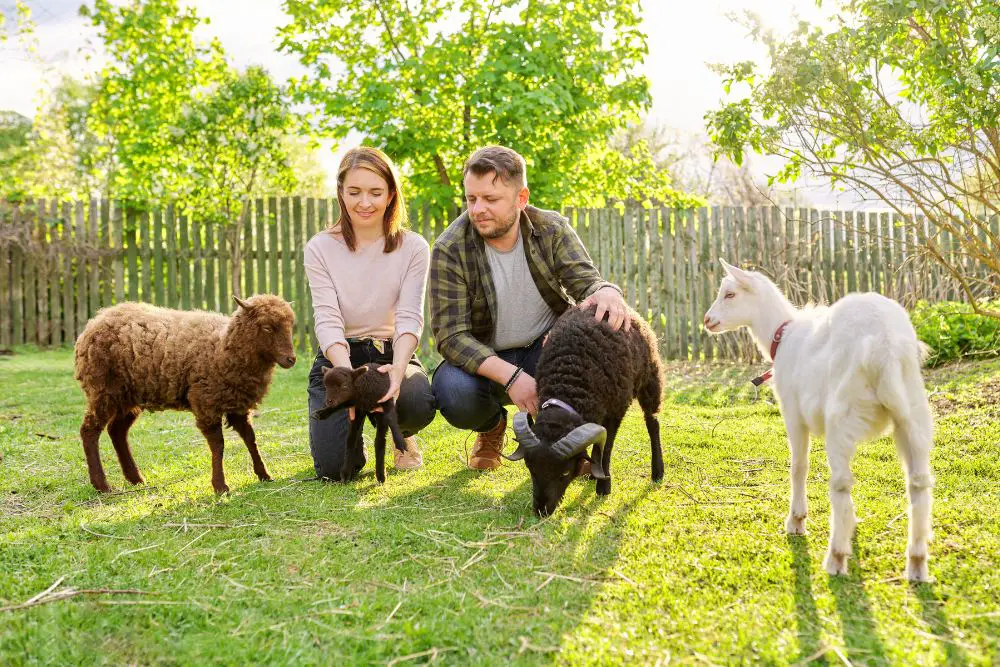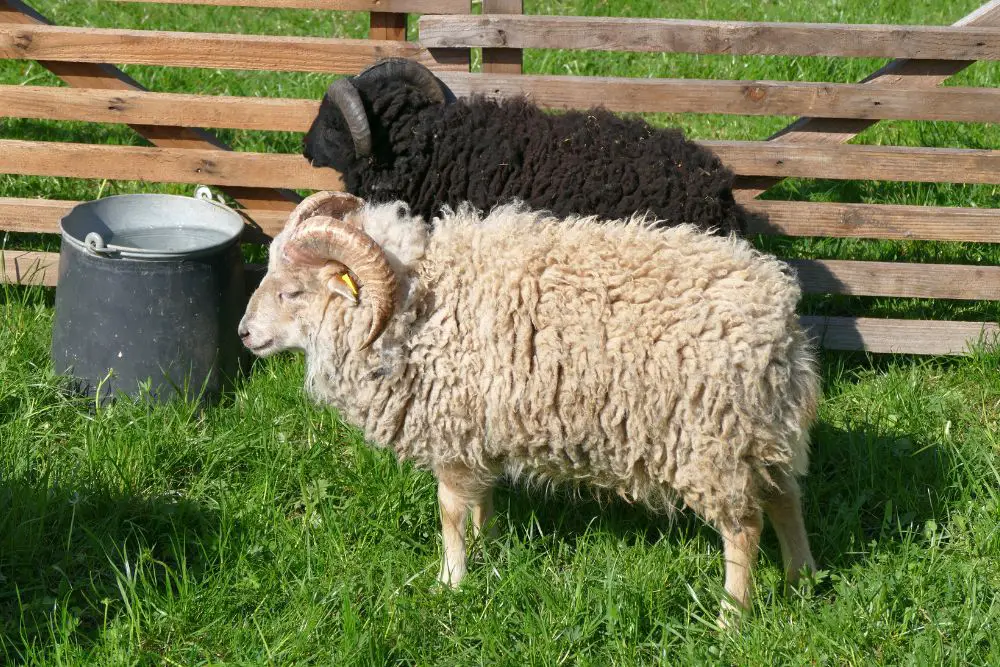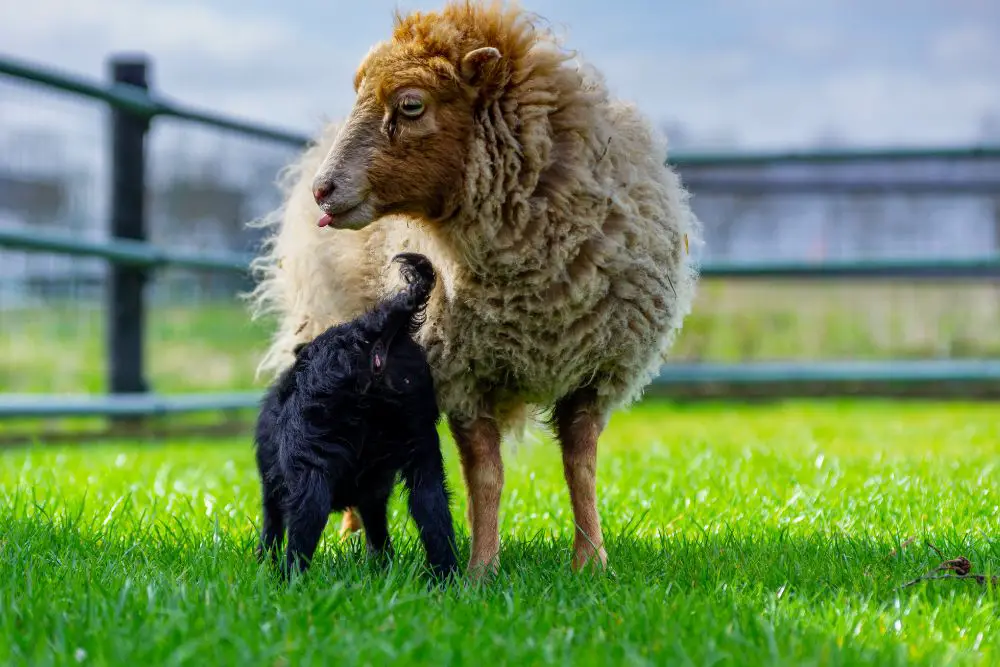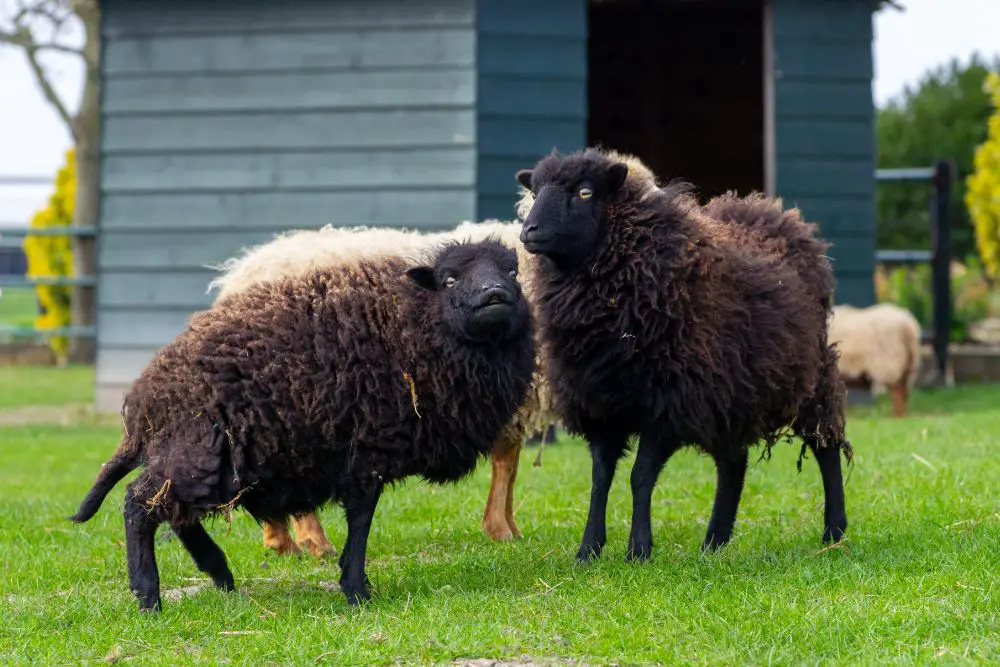Ouessant sheep are the smallest sheep in the world, and until recently were only found on the small island of Ouessant off the coast of Brittany, France. This breed of sheep may be the perfect choice for you if you are seeking a small-statured, domestic sheep that produces quality wool, but requires less land to raise.
This article covers their history, their breed attributes, and examines the characteristics of their multi-colored wool in detail, so you’ll discover if this is the right breed for you.
Table of Contents
Ouessant Sheep Origins
The Isle of Ouessant (pronounced Ushant) is where the Ouessant sheep comes from. Today, they are a rare breed and are also considered the smallest breed of sheep in the world.

They have also been called Breton Dwarf sheep and Mouton D’Ouessant for their tiny stature, but weren’t known outside of the Ile D’Ouessant until the 20th century when they were sent to a few farms in European countries, and North America.
They are thought to have originally come from short-tailed European stock, and evolved on their own, on public lands, becoming smaller due to the poor grazing conditions of their environment.
This breed nearly became extinct in the middle of the 20th century, but were saved by aristocrats who kept them as ornamental sheep around their chateaux.
This breed of domestic sheep is beloved by heritage sheep farmers in Great Britain, and the Ouessant Sheep Society was formed there in 2005 to protect and preserve this tiny breed.
Characteristics of Ouessant Sheep
The Ouessant sheep is a typically dark brown or black sheep of small size standing only 18 to 19 inches tall.


| Characteristics | Description |
| Origin | Island of Ouessant, France |
| Appearance | Despite being a small sheep, rams have impressively large horns, while ewes are polled. Both rams and ewes must have good conformation, with slender and well-proportioned legs. They should have a wide rump with a short tail seen above the hocks. They should have bright eyes with a prominent orbit, and small rounded ears. |
| Wool | Micron range of 25 to 28 and a staple length of 3 to 4 inches. |
| Weight | Rams should weigh between 35 and 45 pounds Ewes should weigh between 30 and 40 pounds |
| Fertility | Lambing is easy and ewes make great mothers |
| Meat | Minimal. Ouessant Sheep aren’t generally bred for their meat. |
| Environment | Require far less land to raise |
| Common Uses | Household pets, petting shows and attractions, wool production |
A few white Ouessant sheep have been reported, but breeders see this coloring rarely in their flocks.
What Kind of Fleece Does the Ouessant Produce?
This breed of sheep has a thick undercoat and produces thick, semi-closed fleece of impressive length that is well-packed.
This primitive type of fleece is considered high quality and can be used in weaving, felting, or hand-spinning. This wool is especially desirable due to its unique mixture of colors.
Why Should You Raise Ouessant Sheep?
There are many reasons why you should consider raising Ouessant Sheep on your sheep farm:
- They require less land to raise than other breeds
- They are hardy and good foragers
- Good sheep for beginners
- Ouessant sheep are naturally curious and intelligent
- Highly adaptable
- Unique wool qualities and good for wool production
- They stay with their flocks and are alert to potential danger
- Ewes make good mothers and lambing is easy though multiples are rare
- Can be kept as pets due to their small size and friendly personality
- Good at keeping lawns maintained – can get rid of your lawnmower!

